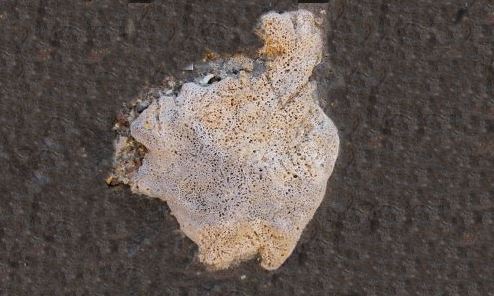Eunapius crassissimus has a spindle-shaped, spherical, or irregular outline without branches. The body comprises megascleres, gemmoscleres, and gemmules, with the absence of microscleres. The surface is hispid, and the oscula have a star-shaped appearance with radiating furrows. The dermal membrane is well-developed, and the consistency is extremely rigid. The megascleres are curved feebly and cylindrical, with spicules having blunt and rounded ends (amphistrongyla). They appear smooth, with a minute terminal projection at each end. Immature megascleres exhibit slender amphioxea. Their length and width range from 0.25-0.32 mm and 6-27 µm, respectively. Gemmoscleres are cylindrical, slender, and curved amphistrongyla with small spines along the body length. The length and width of gemmoscleres range from 0.08-0.12 mm and 4-10 µm, respectively. Gemmules are spherical, medium-sized, and found at the base. The pneumatic layer is thick with polygonal air sacs, and gemmoscleres are embedded tangentially in the pneumatic layer. The foramen tube is of medium length, projecting up to the surface of the pneumatic layer, with a diameter ranging from 0.28-0.33 mm. The coloration of Eunapius crassissimus is nearly black, and when zoochlorellae are present, the body appears dull green.
